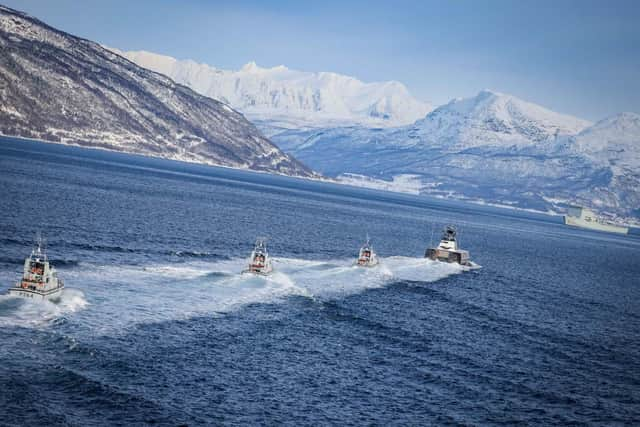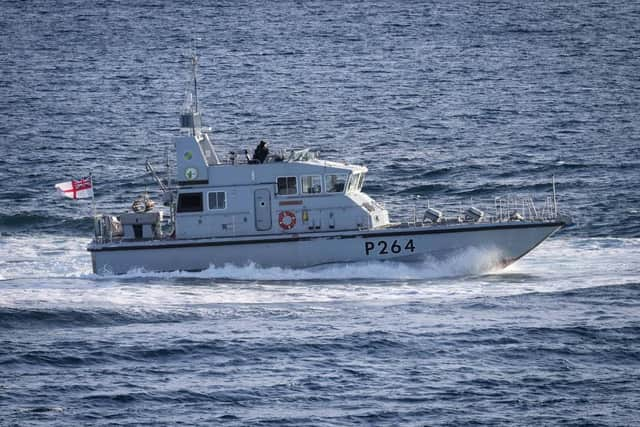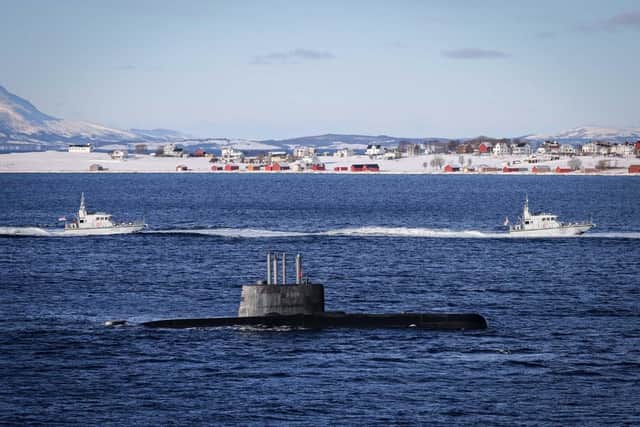Royal Navy: Four Coastal Forces Squadron ships brave freezing conditions in Arctic Circle for first time in defensive exercises
and live on Freeview channel 276
Four of the Royal Navy’s smallest ships – HMS Puncher, HMS Archer, HMS Pursuer and HMS Smiter – operated off northern Norway for the first time in 35 years. The Coastal Forces Squadron (CFS) vessels carried out their operations alongside NATO allies after sailing from Portsmouth to Harstad.
Exercise Joint Viking was carried out 150 miles inside the Arctic Circle – training for Norway and its allies to defend its frontiers and NATO’s northern flank in the face of threats. Each P2000 vessel operates with a core company of just five sailors and spend most of their time in home waters.


Advertisement
Hide AdAdvertisement
Hide AdThis is to protect patrol the UK coastline and help train crews aboard larger vessels in the art of fending off fast attack craft. The CFS is based in Portsmouth and the exercises carried out demonstrate demonstrated the flexibility and robustness of the 20-metre-long Archer-class small ship and their crews.
The squadron’s Commanding Officer, Commander Richard Skelton, said: ‘This deployment marks a watershed moment for the Coastal Forces Squadron, not only have we breached the Arctic for the first time we have integrated seamlessly with the Norwegian Coastal Rangers to deliver operational effect where needed.’
‘This a clear declaration of intent to support our allies and partners in non-traditional means. Not to mention it was the sort of adventure you join the Royal Navy for.’
The four P2000s joined the Norwegian Coastal Forces (KJK) for several operations. This included small teams from the KJK and Royal Marines heading ashore via zodiac boats at night during a blizzard.


Advertisement
Hide AdAdvertisement
Hide AdThey then had to return covertly at a later time to collect the teams after their mission was complete, embarking them and their Zodiac for the return trip. HMS Puncher and Smiter became the first Squadron units to conduct a personnel transfer with a Norwegian submarine, HNoMS Ured – embarking one of their submariners to return them to port.
Lieutenant Beth Humby, Commanding Officer of Smiter, said: ‘The ship’s company have responded brilliantly to the flexible nature of our tasking, from tactical insertion of combat teams to submarine escorts in some extreme weather. Integration with the Norwegian Coastal Rangers has been invaluable in allowing us to develop our own tactics and procedures.’
The Squadron units supported the wider Joint Viking task group which gave them the chance to sail with amphibious flagship HMS Albion and HNoMS Ured, led by HNoMs Skjold while a pair of F-35 stealth fighters flew overhead. HMS Pursuer was also involved in an amphibious boarding demonstration in front of the Crown Prince of Norway, Magnus Haakon, aboard a Norwegian CB90 fast combat boat.


Moving back to more traditional Coastal Forces Squadron tasking, the ships were asked to carry out force protection for the amphibious task group as well as being used to defend a strategic area from a hostile submarine.
Advertisement
Hide AdAdvertisement
Hide AdBeing able to quickly transition from traditional tasking to higher tempo and covert operations highlights the range of roles and tasks the Squadron can achieve, even in some of the most hostile and challenging conditions.